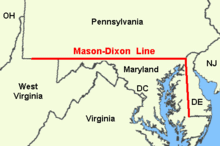Latest Intellectual Property Chapter Of TPP Agreement Leaked: Would Be A Disaster For Public Health
by Mike Masnick, Tech Dirt
Thu, Oct 16th 2014 7:57am
(W)e’ve discussed the ridiculous and unnecessary secrecy concerning trade agreements negotiated by the USTR. The text of the negotiating documents and even the US’s general position is kept secret until the very end, at which point concerns from the public and innovators no longer matter. Instead, the USTR relies on legacy industry “advisors” who are mostly interested in protecting what they have from disruption, change and innovation. For all the talk of how these agreements are “free trade” agreements, they tend to be anything but. They are focused on protecting a few industries against competition, disruption and innovation. The former US Trade Rep Ron Kirk was unusually honest a few years ago in admitting that these agreements would never get adopted if the public actually knew what was in them. A year ago, Wikileaks helped leak the “Intellectual Property” chapter of the Trans Pacific Partnership (TPP) agreement, and now it’s done so again with a more recent version of the chapter. Public Citizen has put together a thorough analysis, highlighting a key change: the US pushing to delay access to affordable treatments for cancer and other diseases, in direct contrast to the pledges of the Obama administration.
…
the US is pushing strongly for “drug-company friendly” language that undermines existing agreements under TRIPS. In particular, TRIPS has long allowed countries to authorize the production of cheaper generic drugs to deal with significant health problems. Big Pharma — showing how it really feels about public health — has been angry about this for years, and appears to be using TPP as a vehicle to try to undermine it. Of course, they know better than to kill off this provision entirely.
…
As you may recall, Eli Lilly is currently demanding $500 million from Canada under a corporate sovereignty (“investor state dispute settlement” or ISDS) tribunal, because Canada rejected some of its patents for not being any more effective than existing offerings. For most of us, it seems like a perfectly reasonable reason to reject a patent: your patented drug doesn’t do anything to make it more useful than existing products. Canadian law agrees. But big pharma, like Eli Lilly flips out, because they want to produce new drugs that they can patent as old patents run out, hoping to trick people into wanting the new, much more expensive “new new thing” rather than the old, generic, cheaper offering that is just as (if not more) effective.A bunch of countries are pushing for the right to cancel a patent if it “is used in a manner determined to be anti-competitive,” but of course, the US and Japan are completely against such a thing. Instead, the US and Japan say it should only be cancelled on grounds that would have been justified for refusing to grant the patent in the first place. In other words, most of the countries recognize that patents can be abused in anti-competitive ways and want to protect against that. The US and Japan, on the other hand, appear to be happy with enabling anti-competitive abuses with patents. That says something.
In the copyright section, it appears that US goes beyond existing US law in asking that “making available” be considered one of the exclusive rights protected under copyright law. Some US courts consider “making available” to be considered part of the “distribution” right, but others have disagreed (saying that the distribution right only covers works that have actually been, you know, distributed). While the legacy entertainment industry likes to pretend this is settled law and merely making available equals distribution, that’s not entirely clear. No matter, in the agreement, the US (and Japan) push to require everyone to include “making available” as an exclusive right for copyright holders.
There was great fanfare a few years ago when the USTR announced that, for the first time ever, it would include some language about fair use to appease those who were concerned about how these agreements only ratcheted up the enforcement side of copyright, and not the public’s rights. Except, when the details finally leaked, we realized the proposed language was actually about limiting fair use by putting a much stricter definition on it. That language is still in the agreement. There still appears to be debate about copyright term length, with at least some pushing to extend the copyright term, because, hey, copyright terms always expand. This comes despite even the head of the Copyright Office agreeing that copyright terms should be reduced.
The US is also looking to definitively kill off any chance of an Aereo-like solution (even if Congress were to pass a law in response to the Supreme Court), by saying that such a service shall not be allowed without authorization of the copyright holder. The agreement would also extend broken anti-circumvention rules that block non-infringing and perfectly reasonable uses. The US is (of course) pushing for more criminal copyright efforts (Vietnam and Malaysia are pushing back). The US, against pretty much everyone else, is also pushing for statutory damages to be a necessary option for civil copyright cases, despite the massive problems we’ve seen with statutory damages in the US and how it enables shady practices like copyright trolling.
There’s a lot of debate about whether or not recording a movie in a theater should be a criminal act. The US, of course, is pushing for what appears to be an extreme definition where any recording should absolutely be seen as criminal. Other countries would like it to be more flexible, leaving it up to the countries to decide if they want to make it criminal. Singapore says the taping should be willful, and Mexico says it should only apply to a significant part of the film. The US doesn’t care. If you accidentally record a bit of a movie? Go to jail.
There’s a lot more in there, but, once again you can clearly see why the US remains so against any transparency at all in these negotiations. Having to actually answer for why they’re only concerned with protecting the rights of the legacy copyright industry and pharmaceutical industries, while paying little to no attention to the impact on public health, knowledge and innovation, would apparently put a damper on their future job prospects.




 So,
So,  Welcome to the Stars Hollow Gazette‘s
Welcome to the Stars Hollow Gazette‘s 
 Charles Mason and Jeremiah Dixon complete their survey of the boundary between the colonies of Pennsylvania and Maryland as well as areas that would eventually become the states of Delaware and West Virginia. The Penn and Calvert families had hired Mason and Dixon, English surveyors, to settle their dispute over the boundary between their two proprietary colonies, Pennsylvania and Maryland.
Charles Mason and Jeremiah Dixon complete their survey of the boundary between the colonies of Pennsylvania and Maryland as well as areas that would eventually become the states of Delaware and West Virginia. The Penn and Calvert families had hired Mason and Dixon, English surveyors, to settle their dispute over the boundary between their two proprietary colonies, Pennsylvania and Maryland.
Recent Comments